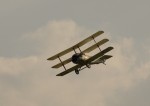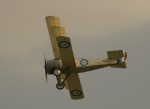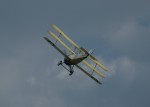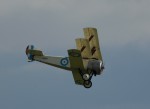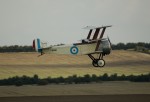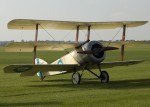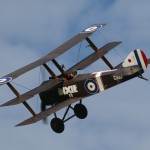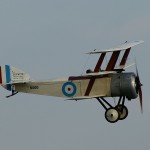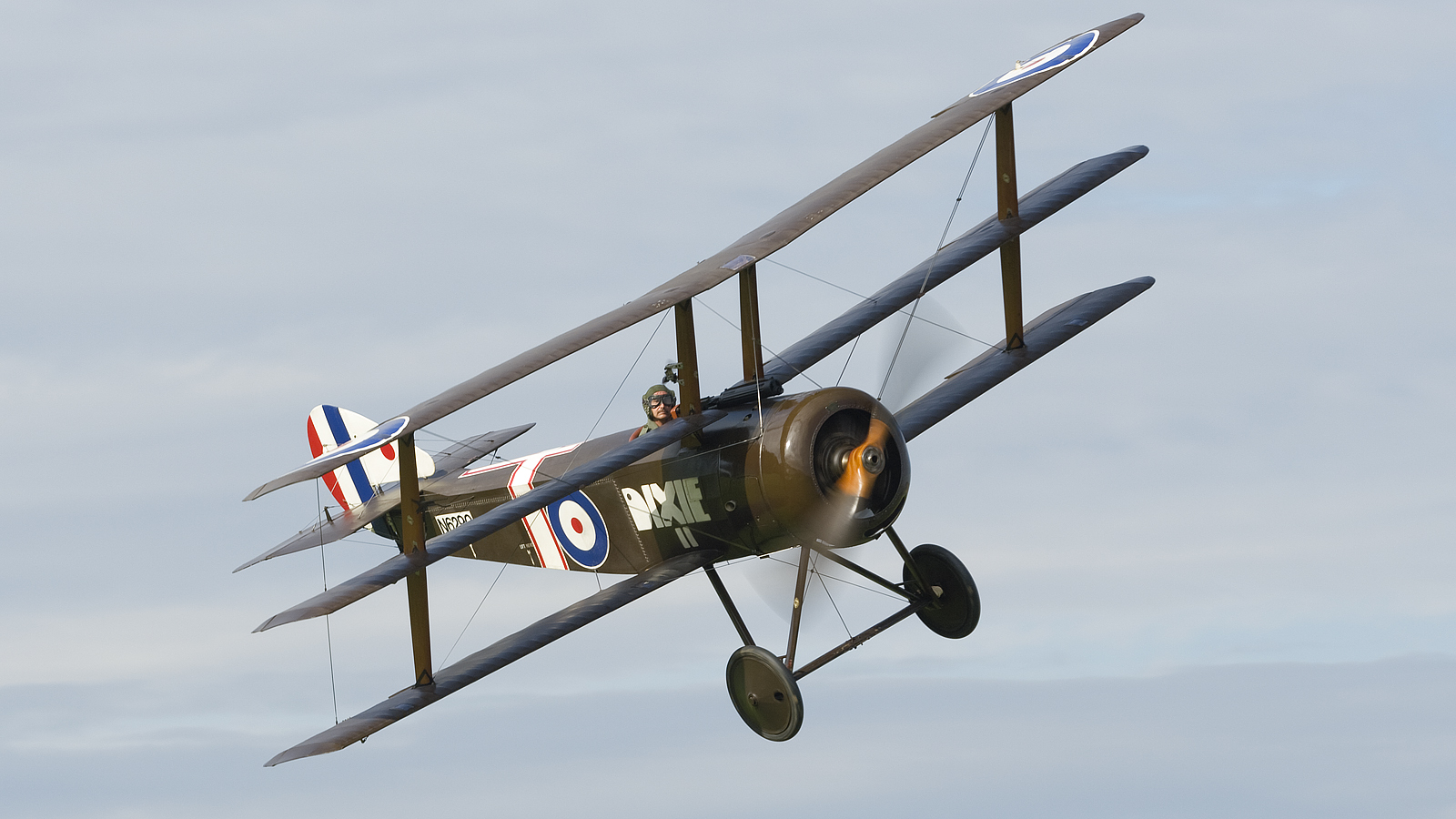
The Sopwith Triplane was a British single seat fighter aircraft designed and manufactured by the Sopwith Aviation Company during the First World War.
Developing nation: British.
Manufacturer/designer: Sopwith Aviaton Company/Chief engineer Herbert Smith.
Production Lines: Kingston upon Thames
Type aircraft: Triplane fighter.
First flight: 28 May 1916.
First delivery: December 1916.
Produced: 147
The Sopwith Triplane had three narrow-chord wings. The combined wing area of the three mainplanes gave the aircraft plenty of lift. Ailerons were fitted to all three wings; the interplane struts were plain but strong and few bracing wires were needed. The fuselage was a typical Sopwith wooden box girder. Tail-plane, elevators, rudder and fin resembled those of the Pup, but later production models had a tail-plane of reduced area.
The first prototype Sopwith Triplane, N.500, went to France in mid-June, 1916 to undergo Service trials with Naval “A” Fighting Squadron at Furnes. The Triplane was an instant success, and no time was lost in testing it in action, for it was sent up on an interception within a quarter of an hour of its arrival at Furnes. It was destined to be flown operationally by naval units only.
The Sopwith Triplane was used in combat by the Royal Naval Air Service. Visibility from the cockpit was outstanding but the “Tripe” was slower and less heavily armed than it’s German opponents. The Germans were impressed with its performance and a captured Triplane inspired the development of the Fokker DR.I. The Triplane was eventually withdrawn from service and replaced with the Sopwith Camel. The “Black Flight,” commanded by Canadian ace Raymond Collishaw, shot down 87 German aircraft in three months while flying the Sopwith Triplane. Downing 33 enemy aircraft, Collishaw scored more victories with this plane than any other ace.
Operators
- France – French Navy (17 aircraft)
- Greece – Hellenic Navy (1 aircraft)
- Russian Empire – Imperial Russian Air Force (1 aircraft)
- United Kingdom – Royal Naval Air Service
-
- No. 1 Naval Squadron
- No. 8 Naval Squadron
- No. 9 Naval Squadron
- No. 10 Naval Squadron
- No. 11 Naval Squadron
- No. 12 Naval Squadron
- “A” Naval Squadron
Survivors
N5912 (cn 8385M) Only two authentic Sopwith Triplanes remain in existence. N5912 was one of three aircraft built by Oakley & Co. Ltd. and delivered in late 1917. The aircraft saw no combat service and instead served with No.2 School of Aerial Fighting and Gunnery at Marske. After the war the Imperial War Museum displayed the aircraft in a temporary exhibition until 1924. In 1936, the RAF acquired and restored the aircraft, flying it in several RAF Pageants at Hendon, there is presently displayed in the Grahame-White Factory Exhibition Hall.
N5486 was supplied to the Russian Government for evaluation in May 1917. In Russia, the aircraft was fitted with skis and used operationally until captured by the Bolshevists. The aircraft then served in the Red Air Force, probably as a trainer, and was rebuilt many times. Today, N5486 is preserved at the Central Air Force Museum, Monino, Russia.
General characteristics
- Crew: 1
- Length: 5.73 m (18 ft 10 in)
- Wingspan: 8 m (26 ft 6 in)
- Height: 3.2 m (10 ft 6 in)
- Wing area: 21.46 m² (231 ft²)
- Empty weight: 500 kg (1,101 lb)
- Loaded weight: 700 kg (1,541 lb)
- Powerplant: 1 × Clerget 9B rotary engine, 130 hp (97 kW)
Performance
- Maximum speed: 187 km/h (117 mph) at 1,830 m (5,000 ft)
- Endurance: 2 hrs 45 min
- Service ceiling: 6,250 m (20,500 ft)
- Wing loading: 29.92 kg/m² (6.13 lb/ft²)
- Time to 1,830 m (6,000 ft): 5 min 50 s
- Time to 5,000 m (16,400 ft): 26 min 30 s
Armament
- Guns: 1× .303 in Vickers machine gun
All pictures courtesy of Zijde Aviation Photo and Publishing, Rob Vogelaar and Marcel van Leeuwen.






